|
Ah, this is a tricky one. My usual approach would be to look at the transfers, restorations and whatnot for each of the films in this set individually, but given the sheer number of titles, the multiple formats used and the various technical issues the restoration team faced, a more generalised approach would probably be appropriate. There is a more detailed breakdo\wn of the restoration details in the accompanying book, but this swallows up two densely packed pages that I'm not about to reproduce here. Instead I'll provide an overview of the challenges the good people at Indicator faced and my general impressions of what has been achieved, sometimes against all odds.
This set covers Murphy's entire career, which as I noted in the introduction, spans a period of considerable technological change. He shot on a variety of formats over the years, including 8mm and 16mm film, standard definition mini-DV, and HD video, but it turns out there's a lot more to it than that. Not all of the film elements have survived, some titles exist now only as video tape copies, and some whose film elements do still exist are missing sequences and/or parts of the soundtrack, some of which is down to what the booklet describes as Murphy's "frustratingly blasé approach to his early works." In several cases, for instance, films have been restored from the original 16mm reversal material, but are missing shots and sequences that could only be replaced from standard definition camcorder recordings of the films made by Murphy by projecting them onto a screen in his home. Thus, a rich and sharply defined film image can suddenly switch to a lower resolution with inferior colour for a handful of shots before reverting back to the restored film image again. In some cases, all of the film elements have been lost and we have only a standard definition video recording of a production that was shot on 16mm. Given that these compromises allowed Indicator to present each of the films in this set in the most complete possible form, I found this easy to live with.
So what of the transfers? Well, even with access to the original film elements, the restoration team is at the mercy of the original material, and as Murphy alludes to in the special features, when you're working on film and have to sometimes wait for weeks for it to be processed, by the time you realise the exposure was off by a stop or two, the actors have departed and the budget has run dry, so you have to live with it. You're also at the mercy of the weather, and rescheduling a shoot just isn't an option when you only have access to your cast and location for a couple of weeks. It's likely for these reasons that there are a few glum looking exteriors in the UK-set 16mm films, but when the light is right, the film format really shines. Indeed, the early films shot in Greece, where the sunshine that reflects flatteringly off of white-walled buildingsgives the films a most attractive look. Colour can vary in strength depending on the film stock and the wearing effects of age, and detail is often very nicely definied, though again is crisper on some films than others. Unsurprisngly, films that were shot on 16mm look a lot nicer when the restorations are sourced from the original film material, but even the rougher tape copies are perfectly watchable.
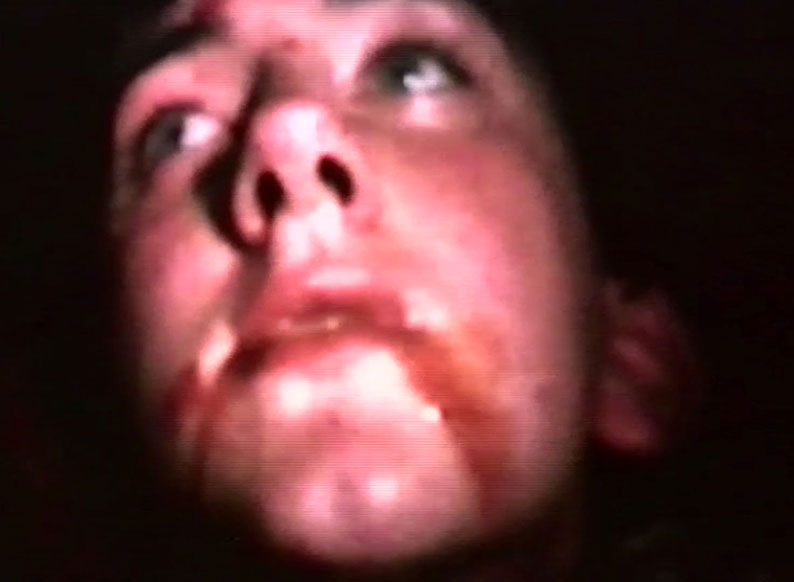
Atlantis: City of Sin (8mm)
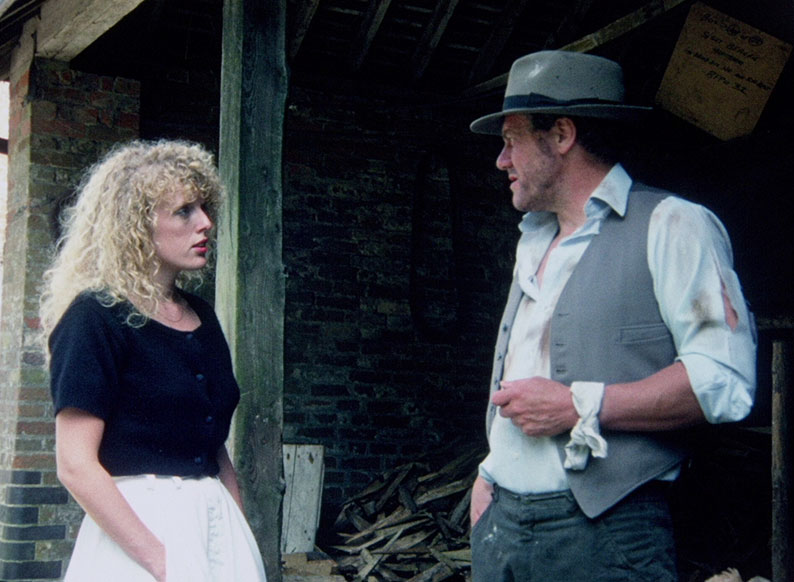
Moonchild (16mm)
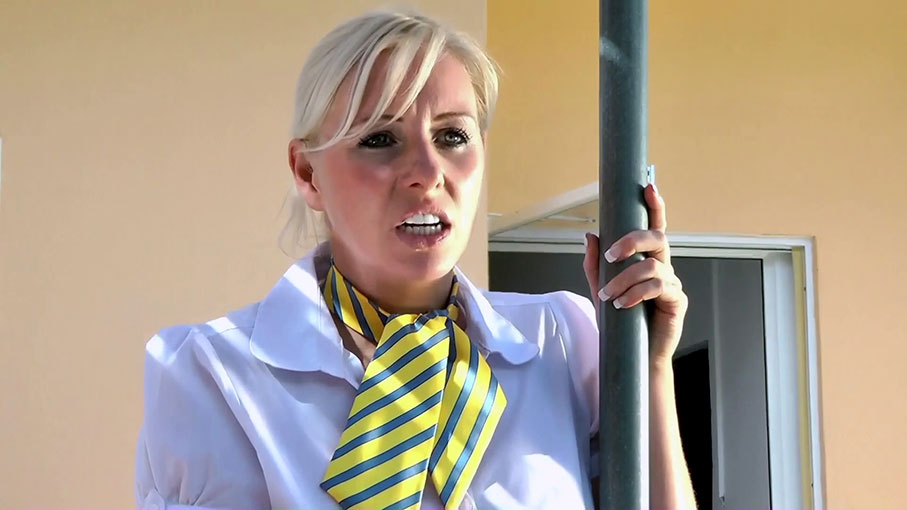
Nekros: Isle of the Dead (HD Video)
It's noted in the booklet that thousands of instances of dust and sparkle were removed and damaged frames repaired, and even in the less vibrant UK shot films, the detail and colour are often very good, and while contrast can be punchy on some, on others it's most attractively pitched. Inevitably, some of the more extensive damage does remain, particularly on the early films, but this improves substantially on the newer films. I'm presuming that the video-shot productions have been transferred in the form in which they were mastered, and these titles thus have that instantly recognisable video look that lacks that special quality that film stock has in abundance. To start tinkering with the image to give it a more film-like grading at this stage would, I think, be inappropriate, and the drama itself is often so absorbing that it quickly ceased to be an issue for me. I was particularly impressed with how good the DV-shot Roxi looks here.
The soundtracks, which are presented here as Linear PCM mono or stereo, have also undergone restoration, and vary widely in quality from the crystal clear digital tracks on the later HD productions to the sometimes fluffy post-dubbed early work, where my raging tinnitus occasionally left me reliant on the welcome hard-of-hearing English subtitles that accompany every film.
On the whole, Indicator has done a magnificent job here with some really challenging material. Given what the restoration team had to work with, I can't see how this could be bettered.
I should reiterate here that the special features for Disc 1 include incomplete fragments of some of Murphy's early short films, and that they have been covered in the Films section above in order to chart the development of Murphy's developing style chronologically.
DISC 1
Murphy's Lore, Part 1: Origin (21:27)
The first segment of a three-part retrospective look back at Murphy's career reveals how Atlantis made him popular with his fellow pupils (yes, he made it when he was still at school) because it featured several scantily clad women, and how this led to him landing a trainee film director job at Elstree Studios. It includes newly filmed interviews with Phil Lyndon, Judith Holding, Patrick Olliver, Steve Longhurst, and June Bunday, and extracts from the interview on Disc 3 with the ever-cheerful Murphy, whose anecdotes are always informative and entertaining. It's a testament to how much he was loved by his regular collaborators that Holding and Bunday both have to fight back tears to talk about their friend and regular collaborator.
Surviving Film Fragments (1967-1969)
The following are all covered in the Films section above as part of the Murphy film chronology:
- Atlantis: City of Sin (1967) (6:02)
- Boadicea (1968) (5:28)
- Gods and Heroes (1971) (2:31)
- Seventh Day (first version 1976) (7:07)
- Insight (1978) (3:13)
- Seventh Day (second version 1979) (5:07)
Also included here is: Seventh Day (second version) Outtakes (2:11), which consists of eight shots not used in the final cut of the film, the first of which makes creative use of a reflection and is really well lit. There's also one of Murphy's trademark animal cutaways (sheep this time).
Image Gallery
64 screens of production stills for the films on this disc, plus some home-grown (but neat) seat reservation cards, screening tickets and posters, a reel-change intermission advice note to the audience, and clippings from Movie Maker magazine.
DISC 2
Audio Commentary on 'Invitation to Hell' with Michael J Murphy, Phil Lyndon and Sally Duncan (28 July 1980)
Recorded, I presume, for a previous DVD release, this commentary features the supremely affable Murphy, actor and fellow Murlyn films founder Phil Lyndon, and Sally Duncan, who acted as Murphy's assistant on several of his later films and seems to have taken a seat some way from the microphone. It matters little, because this is essentially Murphy's show and rightly so, since acting was just about the only job he didn't do on this particular film (he confirms at one point that the film was effectively crewed by the cast members when they weren't in front of the camera). He's charmingly self-effacing here, noting early on that the lines being delivered are "not the world's best dialogue" and later going the whole hog and describing it as "quite a weak script." He later has a dig at this good natured criticism when he says, "I must stop poking fun at this," largely because he doesn't want to belittle the work that others put into it. What a guy. The commentary also proves very informative, with details of the main location (which contrary to my expectations, was researched and hired specifically for the shoot), how equipment limitations impacted the visuals and the sound (the sound recorder needed a short while to get up to speed, but Murphy couldn't afford the film stock to allow it to do so), why the combatants in a climactic fight don't really look like they're trying to hurt each other, and even the homoerotic overtones that were commented on by some critics but, he claims, were never intended. He also acknowledges up front here his repeated use of what became his trademark before-camera flames and his beloved Celtic font.
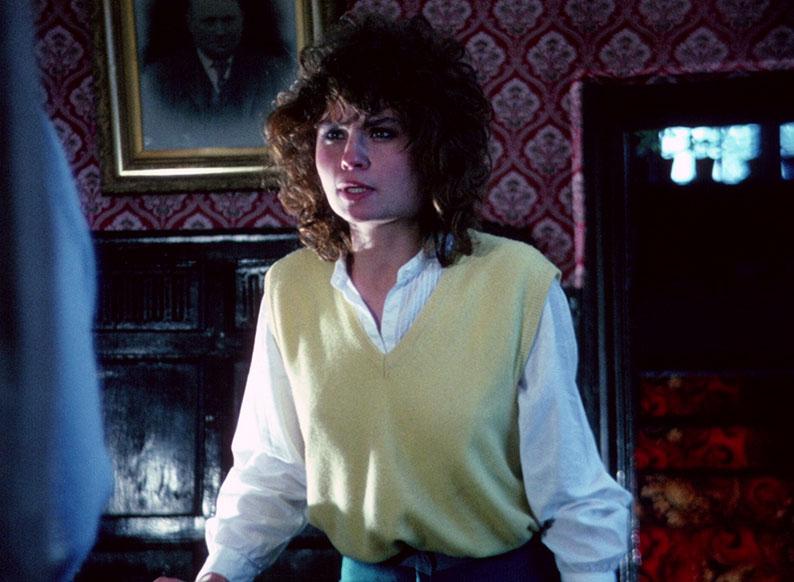
'Invitation to Hell' Audio Commentary with Johnny Walker (6 July 2022)
This new commentary by media historian Johnny Walter is almost the flipside of the above, playing more like a slightly staccato TED talk on the film and its place in the independent horror cinema of the day. It's really well researched and informative, and a solid case is made for turning a blind eye to the film's more amateurish elements and seeing it as a reflection of the changing nature of low-budget genre cinema and distribution trends of the 1980s. It certainly prompted me to give the film another look and yes, see it in a more forgiving light, but I completely disagree with his assertion that it's a far superior film to The Last Night. I also shouted at the screen when he used the word 'super' in place of 'very', though thankfully only once – the English language dies a slow death one word at a time.
'The Last Night' Audio Commentary with Michael J Murphy, Phil Lyndon and Sally Duncan (28 July 2008)
This second 2008 audio commentary from Murphy, Lyndon and Duncan is every bit as engaging as the first, with a mix of technical details – we learn that a wheelchair was used for dolly shots, and that the film was shot silent on a Bolex camera and the dialogue and sound effects post-dubbed – and comments on the film, the story, and Murphy's approach to writing and filmmaking in general. He regrets having filmed the (implied) rape scene, notes that what you get on screen is framed slightly different to what you see through a Bolex viewfinder (a frustration that personal experience allows me to confirm), and admits that he deliberately ignores the 180 degree rule when shooting and editing.* Lyndon emphasises the importance of character, and Duncan – who's closer to the mic this time – admits preferring this film to Invitation to Hell. I'm with you on that one.
The Making of 'Invitation to Hell' & 'The Last Night' (15:00)
Asked to create a making-of video to accompany the 25th Anniversary DVD release of Invitation to Hell and The Last Night, Murphy wittily chose the lowest budget option of just asking Sally Duncan and Phil Lyndon round to his back garden and filming them asking him pre-prepared questions. Frankly, I wish more such special features were as casually friendly as this. We get to see the clockwork Bolex I'd speculated that his early films were shot on even before I had it confirmed by the special features, as well as the metal-lined blimp used to silence its noisy motor (when we shot with this camera and live sound, we wrapped ours in thick anoraks, and still you could hear the bloody thing). It's perhaps no surprise that Murphy has kept so much memorabilia from the films' various releases, which include two previous DVDs (one pairing Invitation to Hell with Dementia 13, a low-budget 1963 horror-thriller made for Roger Corman by a young Francis Coppola), both of which Murphy criticises for their appalling transfer quality. The jovial tone of the whole thing is perfectly illustrated when he's asked if he enjoys working repeatedly with the same group of actors and he responds without missing a beat, "Well, I can't get anybody better," before smiling and providing a more truthful answer.
The Last Night Alternative Titles and Credits (2:11)
Alternative titles and end credits for The Last Night prepared according to Murphy's wishes for the 2008 Sarchophilous Films DVD release. The minor differences are outlined in the opening captions.
'Stay' Outtakes (2:29)
Some shots not used in the film, which are sourced from video and have no synchronised sound, so are set to the film's theme song, about which I am saying nothing.
'Stay' Theme (3:06)
That theme song from Stay, which plays over the rotating image of its 45rpm single release. I presume this is the real deal, and while I have no doubt the record was scanned and animated to fake the image of it spinning on a real turntable, whoever was responsible certainly took their job seriously, as it really does rotate 45 times over the course of a minute. And yes, I counted. What do you mean, I need a hobby?
Reissue Trailers
'Invitation to Hell' Trailer (1:57)
A solidly edited trailer with a few too many potential spoilers, but they fly past quickly enough to act as useful hooks but not be easily recalled when you sit down to watch the movie, as long as you don't do so two minutes later!
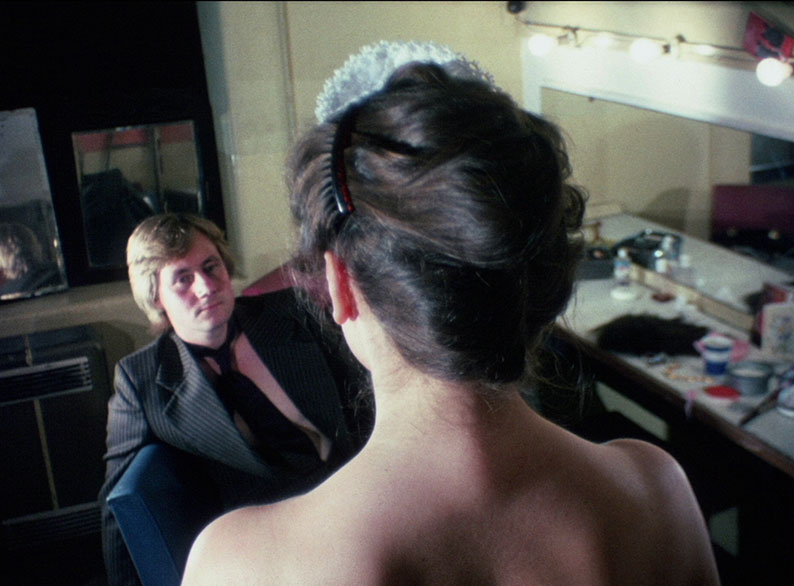
'The Last Night' Trailer (0:47)
A spoiler-littered compilation of the film's nastiest moments. Definitely not one to watch before the film itself.
'Invitation to Hell' & 'The Last Night' Double-Bill Trailer (1:10)
Another rather nifty trailer, this time selling Invitation to Hell and The Last Night as a 25 Year Anniversary double-bill but using the sort of digital effects unavailable when the films were made to combine and animate clips and add some neat graphics.
Custom Video Logo Reel (2:12)
Alternative openings for Invitation to Hell and Death in the Family featuring the logo for Custom Video, Murphy's short-lived stab at self-distribution after he was shafted by the Neon Video label over the deal for distributing the second of these titles. According to the opening caption, Murphy sold about 20 copies of the tape featuring a double-bill of both films. I'll bet these are collector's items now.
Image Gallery
68 screens of production stills, posters, video and DVD covers, and even competition programme clippings for the films included on this disc.
'Invitation to Hell' Script Gallery
The script for Invitation to Hell, laid out in the theatrical rather than standard film format and spread over 46 screens, usually with two pages per screen but with enlargements of key elements, notably Murphy's own hand-written alterations.
DISC 3
Michael J Murphy Presents (18:40)
If you somehow come to this after watching all of the other special features in this collection you'll be hit with a wave of déjà vu, as this is basically the unedited version of the interview with Murphy – conducted on the 18 March 2015 – that provides the retrospective documentary Murphy's Lore with its Murphy interview material. In the second half, he shows us film books in which he gets a mention, then regales an unseen interviewer with amusing and winningly self-depreciating microbudget filmmaking anecdotes whilst seated in in his garden and flanked by regular actors Patrick Olliver and Phil Lyndon. I laughed out loud at the superglue story, which also appears in Murphy's Lore, Part Two. Murphy is so entertaining and so full of life here that is seems inconceivable that he had fewer than four weeks to live when this was filmed.
16mm Test Footage (3:12)
Three minutes of 16mm test footage shot by Murphy in various lighting conditions using different film stocks in order to evaluate how they would transfer to video. He does provide some technical details on the soundtrack at the start, but has to do sonic battle with that damned Stay theme song.
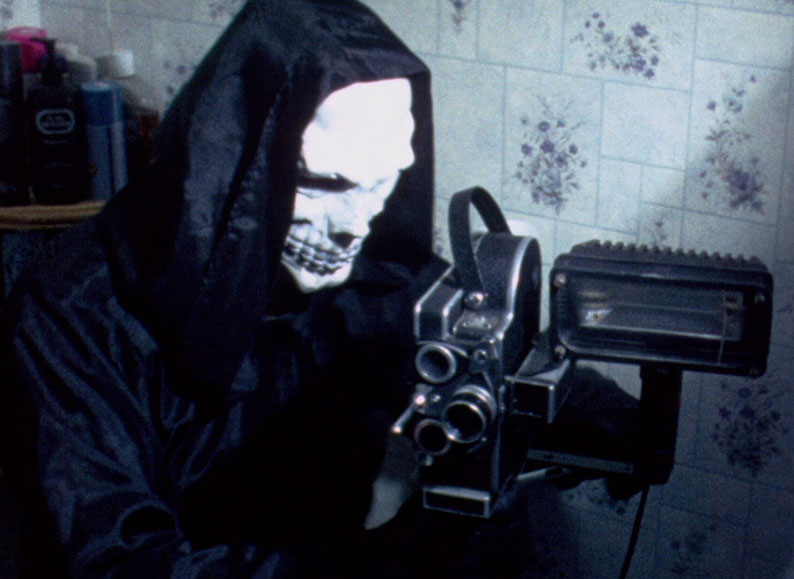
'Bloodstream' Promo (2:41)
A promotional trailer for Bloodstream created by Sarcophilous Films in 2008 for a planned DVD release that never materialised due to the company folding. Violent and gory, it seems to be marketing the film as the sort of video nasty it was sending up, though it does end on a note that vocally winks at the audience.
Image Gallery
27 screens of production stills and VHS covers for Quälen and Bloodstream.
'Quälen' Script Gallery
91 screens containing scans of the Quälen script under its working title of Shadow of Death, I'm guessing this was actor Stephen Longhurst's copy, as all of the lines delivered by his character are manually highlighted, a trick I've seen used by several actors to make it easier to pick out their dialogue.
'Bloodstream' Script Gallery
Laid out over 60 screens, the Bloodstream script suggests Murphy had bought an electric typewriter by then (nice font!), and unusually reduces character names to a single letter, which must have been fun for the actors.
DISC 4
Murlyn's Cave (21:55)
A month after Murphy's death, some of his friends and collaborators – including Phil Lyndon, Chris Porter, Mark Iain Davidson, Jude Flanagan and June Bunday – made one final trip to his home to salvage what they could from his house, loft and studio garage. This extra is basically the raw footage they shot of that visit, which primarily consists of Lyndon sorting through a treasure trove of handmade props and other film related items in Murphy's crammed loft space. For me, this proved intriguing and a little saddening, a too-pertinent reminder, perhaps, of the steadily decreasing limits of my own mortality, and the mountains of discs and memorabilia I will leave behind with no named benefactors. Right, that's my self-indulgent moment over for this review. Next!
There are two trailers for Tristan under its recut title of Legend of a Hero. 'Legend of a Hero' Trailer #1 (1:39) is growlingly narrated by Patrick Olliver, while 'Legend of a Hero' Trailer #2 (1:14) has an American narrator, VGA resolution 3D titles, and a very 80s synth score, so I think we know which market this was targeted at.
Similarly, there are two trailers for Death Run. 'Death Run' Trailer #1 (2:12) is once again narrated by Olliver in dramatic mode, while 'Death Run' Trailer #2 (0:59) sees the return of the American narrator and an 80s synth pop soundtrack, though it at least feels more appropriate here.
Image Gallery
41 screens of production imagery, video and DVD covers, and posters, including a most unexpected Japanese one for Death Run with the Japanese title Saibā Jankushiyon, a katakana interpretation of Cyber Junction. Here endeth today's Japanese kana lesson.
'Tristan' Script Gallery
The Tristan script laid out over 79 screens, which confirm that the film's captivating use of old world English was all there on the page.
'Death Run' Script Gallery
Here the screenplay occupies 47 screens and announces at the start that "This is a basic dialogue script. Additional scenes, dialogue, and changes to be allowed for."
DISC 5
Murphy's Lore, Part 2: Method (20:37)
If you're watching all of the special features in the order listed here and on the discs themselves, you'll already have seen a substantial portion of this second part of the new retrospective featurette in the Michael J Murphy Presents extra on Disc 3 – including the superglue story that so amused me before – and many clips from the movies under discussion, but there's still enough material here to warrant giving it a look. Personally, I'm aching to see the film that Murphy was planning to make next, which was to star Patrick Olliver as an ageing John Holmes style porn star who wanted to become a serious actor, and was set to be titled Pornophobia.

There are two trailers for Avalon, and while both are effectively a montage of action-led clips shorn of dialogue and effects, 'Avalon' Trailer #1 (2:20) is accompanied by one of the more grating extracts from the film's score, giving it the air of an art-house movie. 'Avalon' Trailer #2 (1:26) has better music and some 'serious quest' narration, and thus constitutes a more commercially minded sell.
'Moonchild' Trailer (1:35)
A smartly edited promo with a couple of potential spoilers for those with sharp memories (not me, then). The restored HD transfer has been used to reconstruct a trailer that was originally produced in standard definition and distributed on VHS. Neat.
Image Gallery
29 screens of production still, artwork, video covers, and international posters, including a Japanese one for Avalon that adapts the title to the available syllables in the language as Abaron.
The 'Avalon' Script Galleryis spread over 68 screens.
DISC 6
'Atlantis' Audio Commentary with Michael J Murphy, Phil Lydon, Judith Holding and June Bunday (3 January 2010)
Murphy is joined by three of the film's principal actors for another entertaining collection of anecdotes and good-natured piss-taking at their own and each other's expense, with praise for the costumes, the sets (particularly the doorways for some reason), and some of the effects work, which is joined by gentle digs at what doesn't quite come off. "You're acting now," Murphy says to Bunday at her first on-screen appearance, to which she replies, "Ooo, am I? Is that what it is?" Murphy says of the optical effects, "When it works, it looks good, but it doesn't always work," then usefully outlines why such effects are harder to pull off effectively on film than on video. There are also some interesting background details revealed here – the gladiator extras who were recruited from local gyms, and fights that were hurriedly choreographed just before the shoot – and we learn that this was originally planned at the first part of a trilogy, the second two parts of which were never made.
The Making of 'Atlantis' (c. 2000) (7:10)
Not a 'making of' featurette in the usual sense, this consists of a single blue-screen shot of Murphy talking straight to camera in which he reflects on the experience of making Atlantis. In typically good-natured fashion, he describes his intention to "go back and do a sort of sci-fi fantasy, real tongue-in-cheek schlocky silly film," confirms that it was made on a very low budget, and reveals that all of the effects were done in-camera for the simple reason that he couldn't afford much film stock. He also says of his earlier work, "As I get older, I look back on some of these films I made, and some of them I think, 'what was I thinking of?'" How could you not like this man?
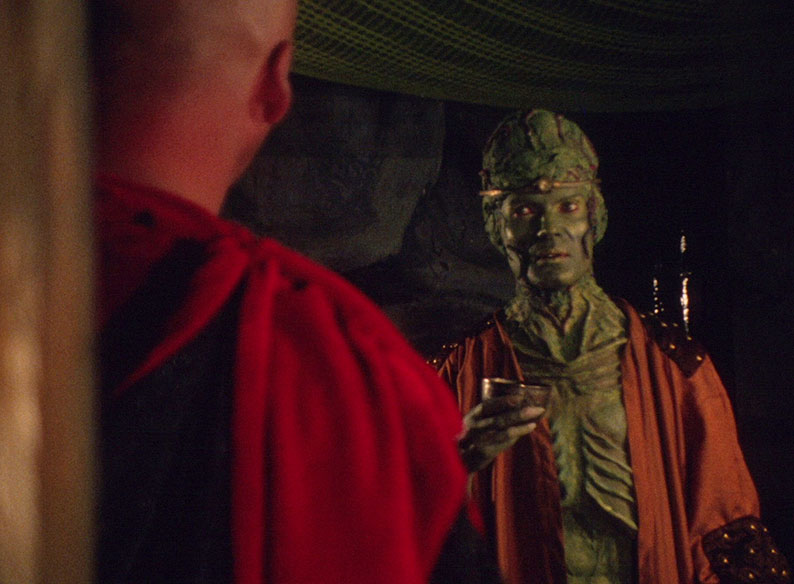
The Making of 'Atlantis' (2009) (6:52)
Another blue-screen introduction from Murphy gives way to intercut interviews with cast members Phil Lyndon, June Bunday and Judith Holding, who share their memories of working on the film. Well, sort of – Holding tells a story of wearing inappropriate underwear for a rescheduled scene, Lyndon describes the film as a like a panto and laughs at scenes he now thinks look silly, and although she then smilingly corrects herself, Bunday's initial advice to budding actors who might fancy working with Murphy is "Don't ever get involved with that bastard."
'Atlantis' Alternative Titles and Credits (5:34)
Two alternative title and credit sequences for the film, the only real difference being the typography.
Bloopers Reel (5:21)
A compilation of bloopers from Death Run, Moonchild, Torment, Atlantis and Second Sight that provide the expected amusement and act as a handy reminder of just how frequently actors swear when they fluff a line.
'Torment' Trailer (2:13)
A slickly assembled trailer that has the potential to spoil the film's best plot twist, so worth saving until after the film, just in case.
'Atlantis' Trailer #1(2:02)
A solid enough trailer that captures the essence of the film rather well, but given the subject matter, I'd question the use of a modern sans serif font for the graphics. Man, you can tell what I do for a living.
'Atlantis' Trailer #2(2:17)
An alternative cut of the above that dispenses with most of the captions but ends with one that shouts in bright red, "Truly unbelievable," which is either a reflection of Murphy's tongue-in-cheek approach or really asking for it, depending on your viewpoint.
Image Gallery
44 screens of photos and artwork for both of the films on this disc, including a French poster for Torment where the title change reveals a later plot twist and a DVD cover for Atlantis.
'Atlantis' Script Gallery
The entire script for Atlantis spread over 67 pages, the usual mix of two-page spreads and detail close-ups.
DISC 7
Mike Gives Us a Tour of His Home and Studio (11:16)
Murphy takes a visiting enthusiast (thanks are made at the end to Mike Peter Reed, so it could be him) and his camera on a tour of the framed images and artwork from his films that he has hanging in his home, then nips outside to take a quick look at the garage and a second outbuilding that he occasionally used for shots where the background could be made dark enough to fake being just about anywhere at night.
'Road to Nowhere' Alternative End Credits (1:30) is exactly what it claims to be.
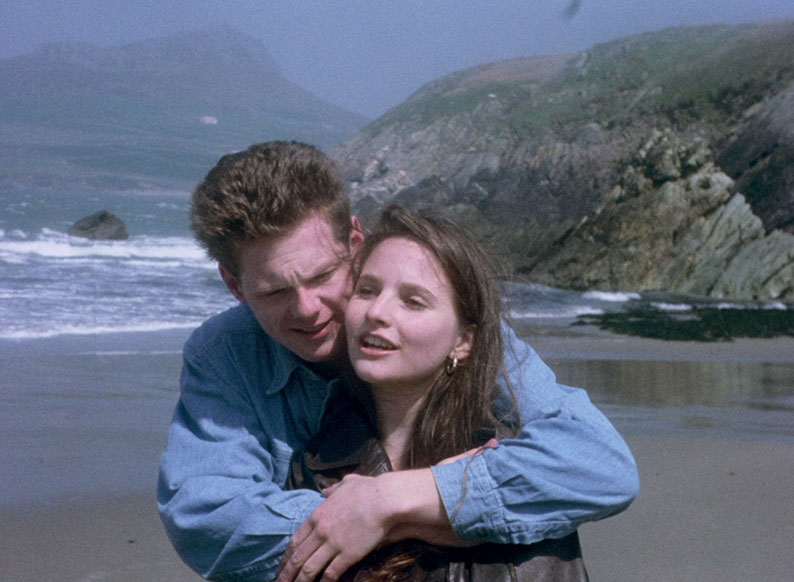
'Road to Nowhere' Trailer (2:13)
A well assembled but spoiler-littered trailer for a film that it's best to go into knowing as little about how things play out as possible. Avoid until after the film itself.
Image Gallery
34 screens of production photos and poster artwork for Second Sight and Road to Nowhere.
DISC 8
Horror-on-Sea Interview with Michael J Murphy (64:13)
This Q&A with Murphy was recorded at his home on New Year's Day 2013 for screening at the 2013 Horror-on-Sea Festival, with questions supplied by Darrell Buxton and delivered by Philip Lyndon and June Bunday. Murphy kicks off by outlining why he will not be attending the festival in person, and it seems so typical of this humble and immensely likeable filmmaker that one of the reasons is that he's just not comfortable being the centre of attention in front of a crowd of people. There's a lot of ground covered here, including his background, his early work, his oft-revisited theme of the tortured artist, the advantages of filming in Greece compared to shooting in the UK (and yes, the weather is a prime one), raising the finance for his films, working with a stock company of actors, and plenty more. When he's asked questions that he has already answered in detail on previous DVD introductions, he splices extracts from in rather than repeating himself here, though he does retell a couple of stories you'll hear elsewhere in this set. His critical view of his own work at one point sees him compare his working methods to those of Edward D. Wood, whose budgets he severely undercut with his microbudget works, then noting that "this doesn't make the films good or me a good director." This critical view of his own work continues when it is noted that he most well-known for double bill of Invitation to Hell and The Last Night and asked if he is proud of these films and his response typically self-effacing – "I wouldn't say I was proud of them," he says before all but dismissing Invitation to Hell as an attempt to cash in on a trend rather than make a movie that came from the heart. I particularly warmed to his memories of going to see just about everything that came to local cinemas as a child, lying about his age to worm his way into 'X' rated movies, and staying in the cinema for hours to watch and rewatch double-bills, all of which I was also happily guilty of in my youth. A hugely engaging and entertaining inclusion – it even has a brief end-of-credits gag reel.
'The Rite of Spring' Behind the Scenes (40:20)
A largely structureless collection of behind the scenes footage, fascinating for Murphy's microbudget working methods, particularly the watering can used to create the effect of rain in front of the camera. The use of Murphy's favourite clockwork Bolex is also justified by the never ending torrent of crow squarks that would have destroyed the soundtrack if the dialogue was recorded live. Includes a snippet of a discussion between a group of crew members in which the sort of middle-class xenophobe who would nowadays be parroting Tory anti-refugee propaganda tries to tell his more humanist colleague that not being racist is actually racist. Fuck right off. z
'Tristan' Alternative Titles and Credits (3:52)
Alternative opening titles and closing credits for the film whose pixelated look suggests that they were created digitally for the film's first DVD release.
'The Rite of Spring' Trailer (2:15)
An effectively ominous sell that avoids major spoilers.
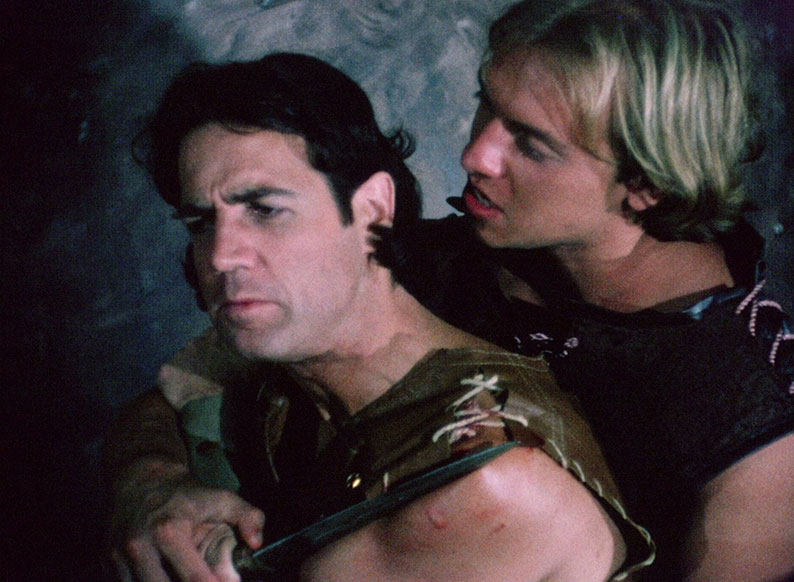
'Tristan' Trailer (2:57)
A tricky film to shape into a seductive trailer, and I'm not sure this one delivers the goods. And this is a really good film.
Image Gallery
A surprisingly frugal 16 screens (two of which are title cards) featuring stills, posters and DVD covers for Rite of Spring and Tristan.
'Tristan' Script Gallery
The whole script for Tristan spread over a whopping 159 screens.
DISC 9
'Skare' Audio Commentary with Michael J Murphy and Judith Holding (22 January 2009)
Director Murphy and lead actor Judith Holding share their recollections of shooting Skare and poke fun at each other and themselves along the way. Murphy reveals that some of the dialogue was re-recorded in post to improve the acoustics, worries that an essentially silly premise is undermined by sequences that take it too seriously, winces at the memory of difficult to film scenes, and says of a lock used to keep the heavily muscled Dan from escaping, "That lock is so flimsy it I don't think that would stop a chihuahua trying to break in." As ever, this is both informative and entertaining.
The Making of 'Roxi' (12:50)
A traditionally assembled making-of video built around interviews with lead actors Mary-Anne Barlow, Ross Maxwell, Valia Yanarou and Bruce Lawrence, and peppered with outtakes and behind-the-scenes shots. Areas covered include the locals, the crew, the weather, the location, onset injuries, and working with other actors and Murphy. I was hit by a wave of nostalgia when watching Murphy shoot with the same Canon DV camera that I once worked with and the exact bargain basement dolly that I used for years, including on fellow site reviewer Camus's feature, Kelling Brae. Oh, the fun we had with that.
'Roxi' Outtakes (27:39)
An enjoyable mix of fluffed lines, technical issues, shot preparation and behind-the-scenes larking about that collectively suggest this was a really fun film to work on. I noted above that actors I've worked with do tend to curse with some vigour when they forget a line, but Ross Maxwell really goes for it, furiously snapping "Fuck!" or "Fuck off!" at himself when this happens, and on one occasion something just a tad stronger.
The Making of 'Skare' (14:42)
Murphy here talks about the origins of the project and the original version – which was scuppered when most of the footage was lost in the post – and the changes that were made for this second take on the story, and Judith Holding comments on what a joy her character was to play. Quite a few outtakes have been included, all of which and more can be viewed in the collection detailed below.
'Skare' Alternative Opening and End Credits (3:26)
The original opening scene, main title and closing credits from Skare before Murphy finished fine-tuning the film in 2009, which was the version released on DVD by Sarchophilus Films.
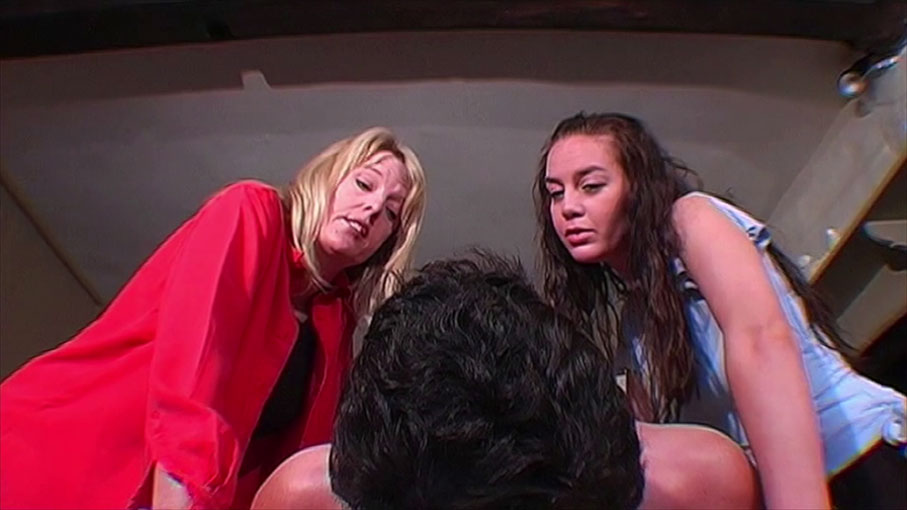
'Skare' Outtakes (13:34)
A fun collection out outtakes from Skare. The expected fluffed lines are often amusing, but the best moments are all technical gaffs, with Murphy's trademark fire-in the-foreground shot triggering a smoke alarm that ruins a deadly serious monologue, a lightbulb that is the main source of room light falling out and then dropped when an attempt is made to replace it, and an absolute belter when a body falls towards the camera and slams into the lens instead of stopping short as intended.
'Skare' Readthrough (46:19)
A video recording of the script read-though of Skare by actors Judith Holding (Martha), Warren May (Dan), Trudi Tyrell (Charllote) and Helen Gardner (Karen, the Nova rep), with Murphy supplying the voices for the absent performers. Interesting to see the actors still shaping their characters, but I'm guessing that there will be few who watch the whole thing. I did, of course. It opens with a few gaffs that dissolve into laughter.
'Skare' (the lost 2001 version)
Rushes (36:37)
With all of the footage shot in Wales for this version lost in the post, all that is left is the material Murphy subsequently shot once back home in Portsmouth whilst waiting for the Wales material to be processed. Although this means the majority of the film has been lost, the surviving 16mm reversal film elements have been scanned in 2K and are presented here unedited and mute (the soundtrack was to be added later) to at least give an idea how the original Skare would have looked, making for a fascinating comparison with the later video-shot version. And it looks good. The fact that it was shot on film gives it an instantly more cinematic feel than the remake, but the camerawork and especially lighting are some of Murphy's best, and this earlier take clearly had a wider spread of locations and supporting characters than the later film. What a loss this looks to have been.
The Leftovers (2:50)
A small collection of surviving clips from the 2001 production that were provided to Sarcophilous Films as an extra feature for its DVD release of the 2009 remake.
Fight Rehearsal Footage (2:23)
Mute footage of a fight rehearsal from the earlier film. If you thought it surprising that a mouthy drunk could best the buff Dan in the remake, wait until you see the muscles on Dan's 2001 equivalent Steve, played by Oliver Price – I have little doubt that he could lift a barn in the air with one hand and drop it on his opponent's head without breaking a sweat.
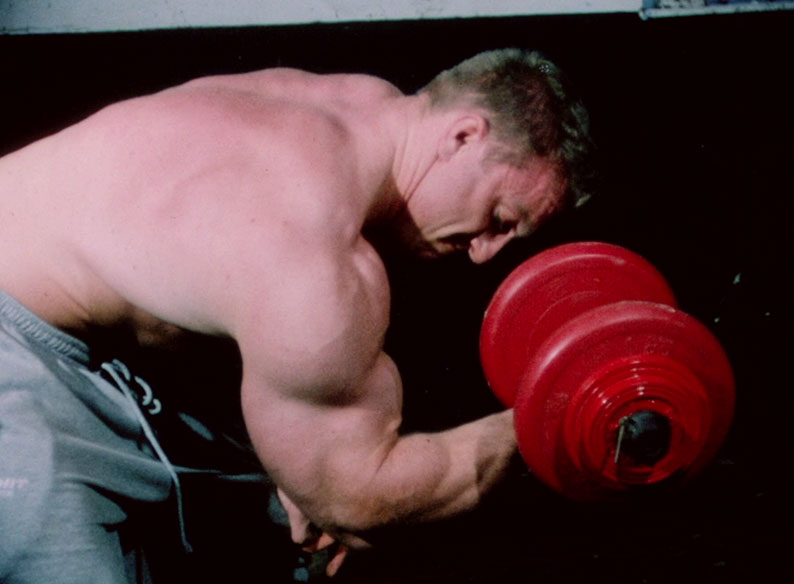
Oliver Price Selected Footage Commentary (5:34)
Oliver Price, who played the hugely muscular Steve in the 2001 version of Skare, commentates on the surviving footage from that film in which he appears – Indicator really did go the extra thousand miles here. Short though it may be, it's still really welcome, and includes a story about Price's car that typifies Murphy's ability to take advantage of any opportunity to save money.
Michael J Murphy on Chris Jupp's 'Beast' (4:28)
An archive DV interview with Murphy in which he talks about how, after the footage from the original Skare was lost, he gave his blessing to first-time filmmaker Chris Jupp to make his own version of the story as Beast. Although he was not so happy with a key change made by Jupp for his alternative take, he admits to enjoying the film, despite some technical shortcomings, and notes that, "It's a laugh, sometimes for the wrong reasons." Includes brief clips from Beast and footage of its making.
'Roxi' Trailer (2:03)
A really, really slick trailer for one of Murphy's best films. I'd so want to see this on the basis of this sell, and there's nothing that would count as a spoiler here, despite the inclusion of brief shots from the finale. Superbly done.
'Skare' Trailer (1:37)
A seductive sell, but littered with spoilers for the uninitiated.
Image Gallery
25 screens (well, 22 if you don't count the title cards) of stills, video covers and posters from Roxi and both versions of Skare. That may be a little misleading, as while Skare is well served, especially the remake, all Roxi gets is a single DVD cover.
'Skare' (2001) Script Gallery
The first script in this collection set out the standard movie rather than stage play format is spread over 131 pages. This provides a welcome chance to compare the original story with that of the 2009 remake.
'Skare' (2009) Script Gallery
What looks like Murphy's own copy of the 2009 Skare screenplay, at least if the handwritten margin notes and 'this has been filmed' crossings out of whole scenes is anything to go by. This one runs for 125 pages and is in film script format.
'Another Man's Poison' by Michael J Murphy
The short story written by Murphy in his spare time that would form the basis of the 2001 version of Skare. Fascinating reading, particularly as it presents events from the viewpoint of the young escapee at the centre of both films. This one runs for 71 pages with enlargements to enable clearer reading.
DISC 10
Murphy's Lore, Part 3: Legacy (24:56)
In this final segment of Murphy's Lore, several individuals pay tribute to Murphy's work and reveal how they first discovered it (usually through the double-bill of Invitation to Hell and The Last Night) and how it influenced them. Curiously, at least on the review disc version, none of them are identified with name captions, although there is a roll call of participants in the closing credits, and I instantly recognised the voice of Johnny Walker, who provided the second commentary on Invitation to Hell.
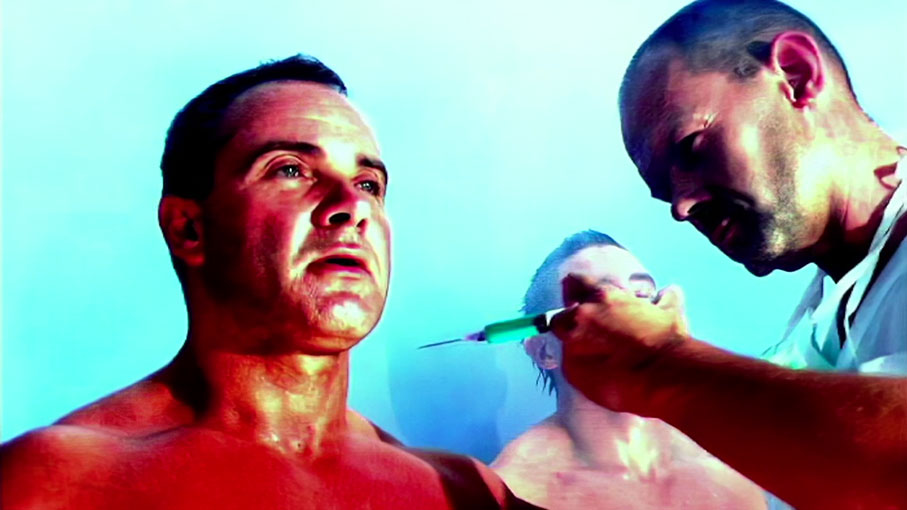
The Making of 'ZK3' (11:10)
A loosely constructed 'making of' featurette, in which Phil Lyndon talks about his character, Judith Holding delights in the Greek island location, and a green-screen introduction from Murphy outlines a couple of things that nearly nobbled the production from the start. Included is some footage of the shoot itself and a few bloopers.
'ZK3' Premiere (Paxos Film Awards 2012) (10:33)
A jokey film award ceremony that pits ZK3 and its makers against the likes of Kenneth Branagh, Christopher Plummer and Martin Scorsese, and has awards for categories such as 'Best Supporting Dead Body'. It will come as no shock that ZK3 sweeps the board.
Two edits of the behind-the-scenes featurette have been included. 'Nekros': Behind the Scenes (final version) (16:17) was clearly the one prepared by Murphy for inclusion as a Blu-ray/DVD special feature and is presented in pristine HD. It's littered with welcome and revealing peeks at the making of the film, but if you're really interested in Murphy's method, then 'Nekros': Behind the Scenes (rough assembly) (53:19) has far more material for you to savour, and though this is presented in what looks like standard definition, the considerably expanded content is worth tolerating the drop in resolution. It seems so typical of Murphy that when HD camcorders became affordable, he went for a low cost consumer Palmcorder rather than a more expensive semi-professional model.
Phil Lyndon: Wish You Were Here (3:01)
One for us older viewers, as a Phil Lyndon pretends to be Judith Chalmers visiting Loggos in Greece in one of her sunny location reports from the long-running holiday series Wish You Were Here. Cheerfully taking the piss throughout, he admires a tall chimney and notes that "as a fan of architecture, I've been particularly impressed by this large erection," and is tempted by a local restaurant owner's "mouth-watering spicy meatballs and village sausage." An optically distorted Murphy makes a guest appearance as Daniel Craig in Casino Royale. You read that right.
'The Return of Alan Strange' Pick-up Take (0:35)
A close-up of Phil Lyndon as Alexander Beck being directed off-screen by Murphy, who hums the Alan Strange theme tune to give him something to react to.
'The Return of Alan Strange' Green Screen (0:37)
The raw green screen footage of an erotic dance used for the parodically amusing title sequence for the in-film series, Alan Strange.
'ZK3' Trailer (1:29)
Not the most persuasive of sells, partly because it looks as cheap as the film probably was to make.
'Nekros: Isle of the Dead' Trailer (1:58)
I'd have trouble working out exactly what the story was from this disconnected assembly of shots and lines of dialogue. Not one of Murphy's best ad pitches.
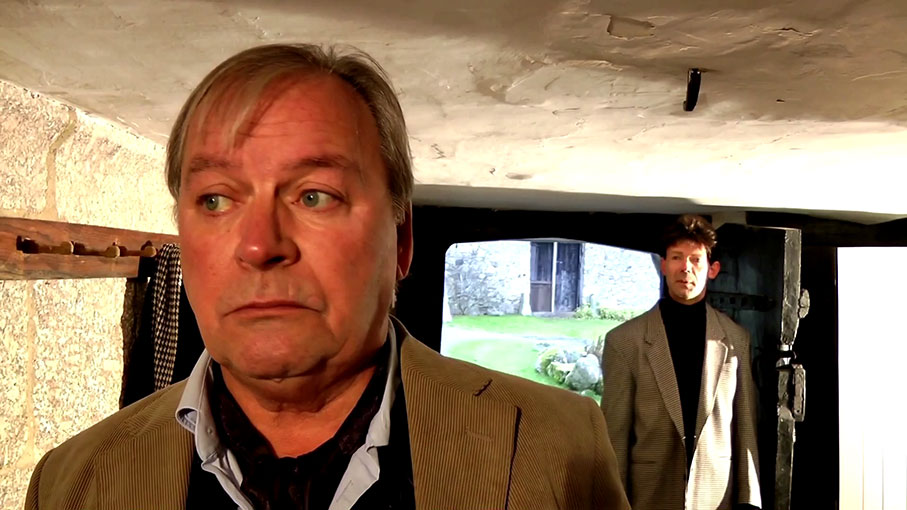
'The Return of Alan Strange' Trailer (1:34)
This is more like it, a trailer that captures the essence of the film, makes the drama and characters look interesting, and it chooses a choice line to sign off with.
Image Gallery
A 39 screen gallery of production photos, posters, behind-the-scenes stills and Blu-ray covers for ZK3, Nekros: Isle of the Dead and The Return of Alan Strange, and even a couple of posters for the ZK3 in-film movie Zombie Knights
ZK3 Script Gallery
Murphy is back to his preferred theatrical script layout for this one, which is spread over 66 pages and includes some hard to read handwritten notes.
Also included is a 118-page Book, and if you think after watching the Eiger-sized mountain of special features detailed above you've learned everything there is to know about Michael J. Murphy, MJM Archive maintainer and author of an upcoming book on the director, Wayne Maginn, is on hand to prove you wrong. In the wonderfully titled essay Balsawood Babylon, he considerably expands on what has been discussed elsewhere in this set and provides a detailed breakdown of Murphy's life and career. This is expanded on further by horror enthusiast, researcher and film festival interviewer Darrell Buxton, who explores Murphy's oeuvre through the process of his own discovery of the man's work. The aforementioned author and Associate Professor of Film and Media History at Northumbria University Johnny Walker returns to make a case for Bloodstream as one of Murphy's most thematically interesting movies. This offers a thoroughly argued repost to the jokey moment at the end of Murphy's self-filmed Horror-on-Sea interview, where an initially po-faced Phil Lyndon begins posing a question with, "You have described your 1985 movie Bloodstream as 'a pile of shit'…" prompting everyone to collapse into gales of laughter. Bleeder's Digest editor Paul Higson then recalls the process of tracking down Murphy's movies and includes some enthralling extracts from interviews he conducted with Murphy about his early days and his time working at Elstree Studios. We then get onto the credits for every single film in this set, a section that proved invaluable to me when writing this monstrous review. As noted above, a detailed breakdown of all of the restoration work done on the films in this set is also provided. A terrific read all round.
I've been reviewing disc releases for 20 years now and watching and collecting them for longer, and in all that time I can honestly say I've never encountered a box set that more comprehensively covers the work of a single filmmaker than Magic, Myth & Mutilation. This is an astonishing release that brings the work of a largely unknown British independent filmmaker to the attention of a wider viewing public, but does so by restoring every surviving frame of film and video that he created and uniting the results with a jaw-dropping collection of special features. Seriously, if you choose to watch every cut of every film and every special feature in this 10-disc Blu-ray set, I've calculated that it would take you approximately 56 hours, and that's if you only watch each film once. Revisit several of the films as I did in the course of writing the above, and you can add another 20 hours or so to that total.
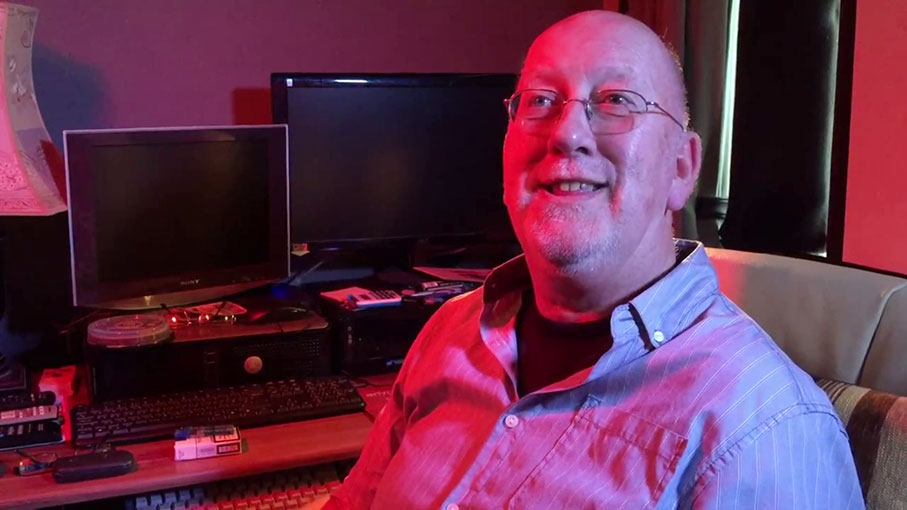
From the viewpoint of someone with a love of cinema in all of its guises, this is one of the finest Blu-ray releases I've ever encountered, and just has to be one of the most complete in existence. I'd seen none of the content before, and over the course of the month I spent watching, rewatching and writing about the work of Michael J. Murphy, my admiration and very real affection for him grew to the point where I became almost heartbroken by the knowledge that he never got to see what will doubtless remain the definitive release of his entire cinematic oeuvre. And having expected to have to make allowances for all of the films in this set and politely profess to quite liking aspects of some of the titles, I was genuinely blown away by how impressive some of films in this collection are. Watching all of Murphy's work for the first time in chronological order was also a real joy, as it allowed me to follow the process of his development as a filmmaker as if I was on the ride with him. By the time I reached the end I found myself wistfully wishing that I had been, as what comes across in spades here is just how much Murphy loved making movies, and it's clear that his unwavering and cheerful enthusiasm drew others to him and infused them with the same level of drive and commitment.
If there's a downside to such a release, at least from the viewpoint of a part-time reviewer with a demanding day job, wobbly health, and an inability to just write just a few lines about a film and leave it at that, it's that to do it justice demanded almost every minute of free time I had for the whole of January and the first week of February. This has effectively put every other disc review on hold and thrown my planned review schedule for the first two months of the year into chaos. It's been fun to write about, but I can almost feel my body sliding onto the floor like a Dali wristwatch with relief that I can at finally take a break and then start working on something new.
None of which should take anything away from a release that I genuinely can't easily see anyone topping this year. The Indicator team has done an amazing job here, and I can only imagine the amount of time and work that must have gone in to pulling everything in this extraordinary 10-disc set together. It's a brilliant release, and I absolutely love it and genuinely cannot recommend it enough. But for the sake of this utterly knackered reviewer, can you leave it just a little while before hitting us with the next one?
<< PREVIOUS
PAGE 1: INTRODUCTION / THE FILMS [1967-1986]
PAGE 2: THE FILMS [1987-2015]
|